Is an Official Independence Referendum for Catalonia ‘Inevitable’?
Over a third of Catalonia's electorate voted in an "informal independence consultation" Sunday, prompting a Guardian editor to predict that it's just a matter of time before the region is granted an official referendum to vote on its independence from Spain.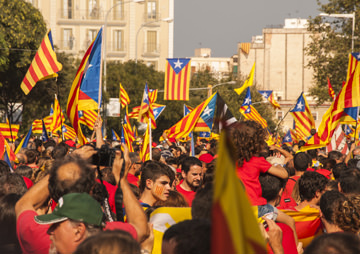
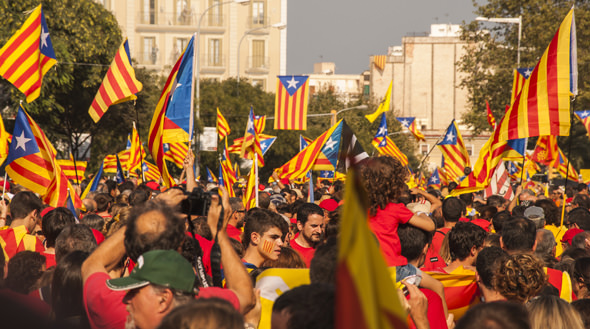
Catalonians celebrate the independence rally held in September in Barcelona, Spain. F.Pallars / Shutterstock.com
Over a third of Catalonia’s electorate voted in an “informal independence consultation” Sunday, prompting Guardian editor Alberto Nardelli to predict that it’s just a matter of time before the region is granted an official referendum to vote on its independence from Spain. Over 80 percent of voters who participated expressed their interest in an independent Catalonian state, but, as Nardelli points out in two straightforward charts, the significance of the vote doesn’t have much to do with how people answered the questions on the ballot.
Rather, it’s the incredible turnout that the Spanish government will not be able to ignore.
The Guardian:
Catalans headed to the polls on Sunday for an informal consultation on the region’s independence. Two questions were on the ballot. The first asked voters if they thought Catalonia should be a state, and the second, if so, should that state be independent. According to provisional figures, 80.76% (1,861,7536 people) of participants voted yes to both questions. 10.07% voted yes-no, 4.54% voted no.
According to Spain’s central government, the election was illegal and an act of propaganda that should have not taken place. The exercise was boycotted by parties against independence, and in fact polls show that the independence question is actually quite evenly balanced. Even the organisers wouldn’t claim that the 80% figure should lead to independence.
The number that does matter from Sunday’s vote is participation. Organisers estimate that once all ballots will be counted, more than 2.2 million people took part in the participatory exercise. Translating the figure into a turnout percentage isn’t straightforward, as the vote was open to residents above the age of 16 and the electoral process was different from standard elections. Using the census would place turnout at about 35.5%. While according to the Catalan government the electoral register counts 5.4 million eligible voters.
—Posted by Natasha Hakimi Zapata
Independent journalism is under threat and overshadowed by heavily funded mainstream media.
You can help level the playing field. Become a member.
Your tax-deductible contribution keeps us digging beneath the headlines to give you thought-provoking, investigative reporting and analysis that unearths what's really happening- without compromise.
Give today to support our courageous, independent journalists.
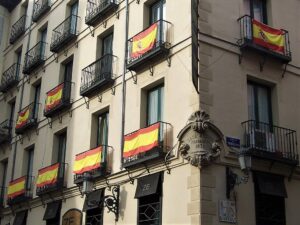

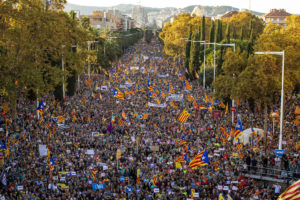
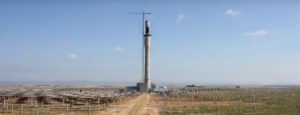

You need to be a supporter to comment.
There are currently no responses to this article.
Be the first to respond.